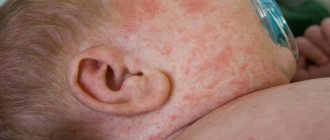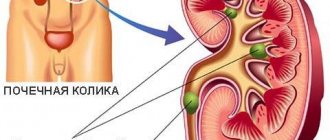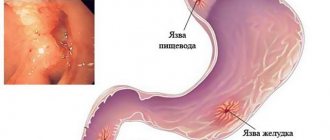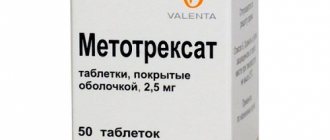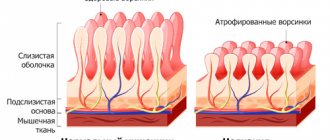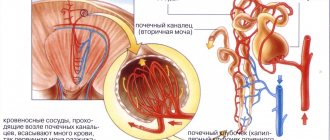What it is
This condition is not a disease, it is a congenital feature of the constitution.
If you maintain a balanced diet and eliminate risk factors, the pathology may not appear throughout your life.
On the contrary, when exposed to the environment and factors that aggravate the situation, pathological changes are inevitable.
In advanced cases, the consequences of this condition can be:
- urolithiasis disease;
- interstitial nephritis;
- urate nephropathy;
- arthritis;
- gout.
During protein metabolism, protein is broken down into purines. The urea released in this case provokes the precipitation of urate salts.
Excessive consumption of meat is a provoking factor in this process.
In the normal state, both salts and uric acid are constantly present in the urine, they are dissolved in it and are excreted during diuresis.
If the exchange is disrupted, then these salts crystallize and also precipitate.
Reasons for appearance
The appearance of uric acid diathesis can be caused by various reasons.
Among them:
- genetically transmitted predisposition;
- errors in diet (excess of foods with high protein content);
- chronic diseases of the kidneys, liver, pancreas (hepatitis, pancreatitis, pyelonephritis);
- alcoholism;
- oncological diseases;
- undergone chemotherapy;
- general decrease in immunity;
- exposure to stress;
- prolonged emotional overload.
How does the disease manifest?
The manifestation of uric acid diathesis at any age seriously affects the performance of internal organs as a whole. The main symptoms of kidney dysfunction are:
- Increased pressure.
- Relapse of asthma (if it is chronic)
- Severe headaches.
- Sleep disturbance, loss of strength.
- Loss of appetite.
- Hyper or hypothermia is possible.
- In case of complications, the patient smells of acetone from the mouth.
In the vast majority of cases, uric acid diathesis appears periodically and, accordingly, does not cause suspicion, and as a result, treatment is delayed.
Risk factors
It is not at all necessary that in the presence of one or more similar causes, uric acid diathesis will occur.
The development of the disease is usually provoked by risk factors:
- prolonged intoxication;
- passion for diets or fasting without the assistance of a qualified specialist;
- sports that require intense stress: bodybuilding, weightlifting, powerlifting, weight-bearing fitness;
- inflammatory bowel diseases in children; dysbacteriosis, enterobiasis;
- heat stroke, temperature stress.
In contrast to unbalanced diets, a risk factor may be the inclusion in the diet of a large amount of:
- meat;
- fish;
- beer and other types of alcohol;
- cocoa and coffee.
It is not at all necessary that risk factors will lead to uric acid diathesis, but they increase the likelihood of its development.
Symptoms of uric acid diathesis
Depending on the age, gender of the patient, and the degree of alkalization of the body, the symptoms of uric acid diathesis may differ from person to person.
In adults
Universal symptoms of uric acid diathesis in adults, present in all its forms.
Here they are:
- the level of uric acid increases in the blood and urine, flaky turbidity is visually detected in a urine sample;
- uric acid crystals from 1-2 mm to several centimeters in size are deposited in the kidneys, subcutaneous
- irritability, frequent mood swings, insomnia appear;
- stones form in the kidneys or in the ureters, in the bladder; when trying to move, they can cause an attack of renal colic, accompanied by fever, acute pain, nausea, vomiting, and irregular heartbeat.
Among women
Women expecting a child have factors that stimulate the appearance of this condition, such as:
- loss of fluid due to vomiting during toxicosis;
- significant weight gain;
- excess vitamins due to improper use;
- active activity of the hormones vasopressin and aldosterone, regulating the exchange and excretion of fluid.
Symptoms that appear in women:
- urine acquires a pungent odor and dark color;
- a slight burning sensation is felt when urinating;
- constipation and weight problems appear;
- there is an increase in blood pressure, muscle weakness, cardiac dysfunction;
- history of chronic kidney disease;
- I constantly feel tired.
In menopausal women, in parallel with this problem, gout may appear, which is associated with increased levels of uric acid in the blood.
In this case, the joints of the big toes become inflamed, this condition is accompanied by excruciating pain.
In children
Uric acid diathesis in children can be triggered by damage to the hypothalamus, as well as by the congenital Lesch-Nyhan symptom, one of the symptoms of which is a violation of purine utilization.
Symptoms:
- increased acidity of urine, the appearance of crystals and salts of uric acid in it;
- increased levels of uric acid in blood plasma;
- breath smelling like acetone;
- irritability for no reason;
- lack of appetite or poor appetite, unexplained weight loss of the child;
- nausea and vomiting;
- the child complains of headaches, pain in the projection of the kidneys, in the joints;
- When this form of uric acid diathesis manifests itself as neuro-arthritic diathesis, the child experiences overexcitation of the central nervous system, manifested in constant crying and sleep disturbances in infants, enuresis and anxiety.
Autonomic disorders such as tics, migraines, intolerance to certain odors, and night terrors may appear.
Allergic manifestations are common:
- asthma;
- eczema;
- hives.
The course of pathology in children
In young patients, such diathesis is otherwise called neuro-arthritic. This condition is not a disease, but a constitutional predisposition.
Acute symptoms are usually not felt by the child, but his behavior changes. The baby becomes easily excitable. Despite their pronounced restlessness, such children quickly grasp information and school material. They are significantly ahead of their peers in mental development.
At night, small patients can urinate in the bed uncontrollably. They are prone to allergic reactions to food and pollen. Therefore, rashes and scratches appear on the skin. In rare cases, they complain of joint pain.
Separately, we should talk about uric acid diathesis in infants. This condition manifests itself in infants immediately after birth. It is expressed in traces of orange crystals on diapers and dark urine. An increase in the amount of urate occurs due to the child’s adaptation to extrauterine life. As a rule, the disorder goes away on its own within a few days.
Diagnostics
To clarify the diagnosis, if symptoms of diathesis appear, you need to contact a nephrologist or urologist.
Laboratory tests prescribed by specialists:
- blood biochemistry analysis with mandatory determination of uric acid levels;
- general urine analysis;
- daily urine analysis, determining the pH content, the level of Ca, Na, Ph, citrate, creatinine, xanthine, to determine diuresis;
- blood test for pH (hydrogen value).
Additionally, an ultrasound of the urinary system (kidneys, bladder, ureters) is performed to detect urate sand.
When diagnosing metabolic acidosis (impaired acid-base balance), the lungs and liver are examined.
In this case, laboratory tests are carried out:
- arterial blood analysis for buffer bases and standard bicarbonates;
- analysis of arterial blood for total carbon dioxide tension;
- blood test for aldosterone and other corticosteroids.
After the data from laboratory and instrumental studies are analyzed by the doctor, adequate treatment is prescribed.
Read what diathesis looks like in a child’s hands. What are the symptoms of diathesis? The answer is here.
Complications
If a woman ignores the symptoms of diathesis, complications in the form of joint diseases and diseases of the urinary system are possible:
- urolithiasis, formation of stones (calculi) in the kidneys,
- tubulointerstitial nephropathy is a non-infectious lesion of kidney tissue,
- gouty nephropathy is an acute and chronic disease that appears after the deposition of crystals of uric acid salts,
- inflammatory joint damage,
- gout is a failure of purine metabolic processes.
Note ! In women of menopausal age, symptoms of the above pathologies are especially often diagnosed. This indicates excess deposits of uric acid salts in women over 45 years of age.
Uric acid deposits
Treatment methods
The main treatment for uric acid diathesis is a diet that limits protein and salt intake. It is accompanied by a significant increase in daily fluid intake.
A sodium-restricted diet helps:
- reducing its excretion from the body;
- reducing the amount of mononarium urate formation;
- decreased calcium excretion in urine.
Medicines used for treatment are aimed at:
- alkalinization of urine and reduction of uric acid content (Kalinor, Urotsit, Potassium citrate, Policitra - K, Soluran, Blemaren);
- xanthine oxidase inhibition, which prevents the formation of uric acid (Allopurinol);
- stimulation of metabolic processes (vitamin and mineral complexes with microelements);
- stimulation of the diuretic process with folk remedies (infusion and decoction of knotweed, bearberry, rosehip, lingonberry leaf, elecampane).
Uric acid diathesis is treated with homeopathic remedies (Lycopodium, Causticum).
To alleviate the condition, physiotherapeutic methods such as
- darsonvalization;
- ultrasound therapy;
- ultraviolet irradiation;
- magnetic-laser and laser therapy;
- magnetic therapy;
- singlet oxygen therapy.
The best results occur when different treatment methods are combined.
Healing by nature
Treatment of uric acid diathesis with folk remedies helps to improve well-being and avoid the formation of uroliths in the kidneys and bladder. Traditional healers advise drinking healing drinks.
Infusion for removing salts
- 1 tbsp. millet, crushed into cereal, pour 2 liters of hot water.
- Leave the product to infuse overnight and strain in the morning.
- Drink 1 liter of infusion during the day.
- Duration of treatment – 10 days.
Cocktail “Cleansing”
- 1 tsp. Mix freshly squeezed turmeric juice with 1 tsp. lemon juice, 1 tbsp. l. honey and a pinch of cayenne pepper.
- Place the mixture in 1 tbsp. warm water and stir until the ingredients dissolve.
- Consume the drink immediately after preparation.
- Drink 1 tbsp. therapeutic cocktail per day for 2-3 weeks.
Decoction for removing uric acid
- Place a handful of dried poplar buds in 1 liter of boiling water.
- Boil for 6-10 minutes.
- Consume the resulting liquid between meals for 2-3 months.
Prevention
To alleviate the general condition, the following preventive measures should be taken:
- introducing carbohydrates into the diet in the form of fresh vegetables and fruits, limiting the consumption of protein foods and salt;
- timely treatment of chronic gastrointestinal and liver diseases in adults and children;
- giving up bad habits (alcoholism);
- dosing of physical activity;
- resistance to stress through auto-training, self-hypnosis, normalization of work and rest regimes.
Unfortunately, a person is not able to influence the risk factors and causes of this form of diathesis, which are inherited.
Find out how to treat diathesis on a child's bottom. What is lymphatic-hypoplastic diathesis in children? Read on.
Is exudative diathesis dangerous in infants? Find out more.

